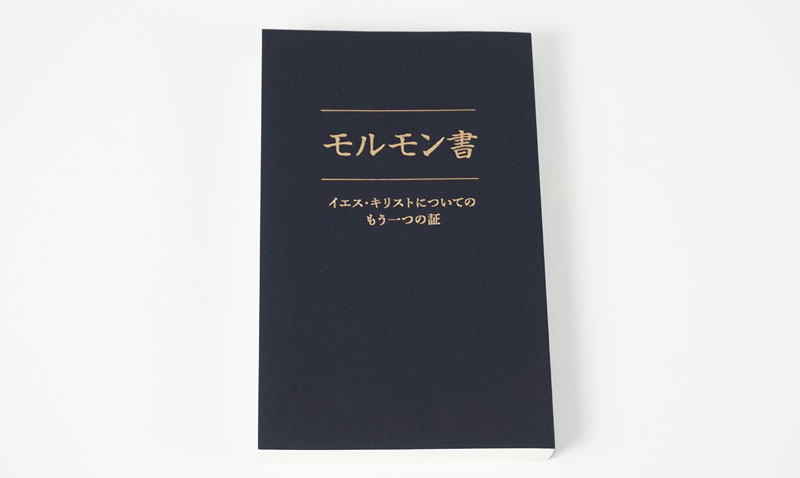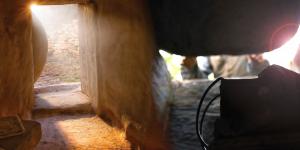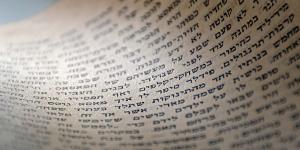You are here
The Miraculous Translation of the Book of Mormon into Japanese

2 Nephi 30:8
The Know
The Book of Mormon contains a prophecy that the “Lord God shall commence his work among all nations, kindreds, tongues, and people, to bring about the restoration of his people upon the earth” (2 Nephi 30:8). One of the ways this has been brought to pass is through the translation of the Book of Mormon into numerous foreign languages.1 One such early translation that stands out is the translation of the Book of Mormon into Japanese.2 It was particularly challenging.
Besides taking five years and nine months of labor, and the fact that its manuscript consisted of twenty-seven handwritten booklets,3 what makes this translation story truly remarkable is the resourcefulness of the young man behind the translation, Alma O. Taylor.4 Taylor was only nineteen when he was called as one of the first missionaries to go with Apostle Heber J. Grant to open the Japan Mission in 1901. None of them knew any Japanese.5 However, of these four missionaries, Alma seemed to pick up the language the most readily.
Soon into his mission, Taylor was translating hymns and other doctrinal works and essays. When he did not know a word or had trouble with grammar, he promptly sought out literate Japanese people nearby or his tutor for assistance.6 After two years of similar work Alma wrote in his journal, “It seems that this work does not, as I expected it would, become easier as I progress in it…In the end…this work will no doubt prove of very great value to me.”7
In January of the following year, 1903, the president of the Japanese mission, President Ensign, announced that the time had finally come to begin translating the Book of Mormon, calling all missionaries to use their free time in moving the work along.8 Weeks prior, Alma had prayed, asking the Lord to inspire President Ensign to begin the work. He took the announcement as his answer and immediately began translating. By the end of June, Taylor had completed eight chapters of 1 Nephi.9
Soon Taylor was formally called and set apart to translate the Book of Mormon. This opened the way for him to focus more singularly on the task. Even with this advantage it still took almost two more years to complete the first draft.10 Taylor recognized that he could not do the work alone. He conducted fasts and consulted with fellow missionaries, saints, native speakers, and scholars.11
As Elder Fred Caine was close to finishing the second draft, exchanging Taylor’s Romaji, or Japanese words written in the Latin alphabet, for Japanese characters, Taylor felt that he needed to hire a professional to help him with the project.12 He first approached Kinza Hirai who had helped Taylor with countless other translation projects. After extending the offer, Taylor was told by the Lord that Hirai was not the man. He was therefore grateful when Hirai’s rejection came.13
One year later, after much prayer and fasting, Taylor still had not found a translator. He was again therefore convinced that Hirai was the man and approached the other missionaries in council. Taylor was granted the council’s blessing, and a proposal was once again extended to Hirai.14 While the proposal fell flat, Hirai did send a letter of introduction to a Mr. Noguchi who he vouched could do the work well.
Unfortunately, Taylor was unimpressed with Mr. Noguchi, and he was again left without a translator.15 He began new inquiries straightway and soon with diligence found two more potential candidates, ultimately settling on Hirogoro Hirai, the brother of Kinza Hirai.16 It seemed that Taylor’s long search was finally over.
Taylor received for his patience, not only a translator, but instruction through revelation. As part of the interview process, Taylor asked each man to correct his translation written in colloquial Japanese.17 However, when Taylor received the copies, each man had converted the text into classical Japanese.18
They explained to Taylor that “it is very difficult to find a standard spoken style that is used throughout all of Japan. Classical, however, is the same in every part of the Empire…there is no standard colloquial which is current in every part of Japan, a translation written in the dialect of the northeastern part of the island would be no good in the southwestern.”19 Realizing his mistake, Alma called on his brethren to council on which style to use for the Book of Mormon. Unanimously they agreed that a simplified version of classical Japanese would have to be used.20
Hirogoro Hirai worked quickly changing the forms of every verb in Taylor’s translation. They met often and when Hirai completed his first section of text, Taylor brought it to others to make sure the classical Japanese translations were straightforward and easy to understand.21 Elder Caine was soon thereafter called to translate full time and the work seemed to move ahead steadily. Hirai had corrected 20 of the 27 volumes that comprised the Book of Mormon when scandal implicating Hirai hit.22
While Taylor was able to determine that the allegations against Hirai were untrue, he uncovered an unpleasant truth: Hirai had hoodwinked him. Hirai had lied about his previous salary and did not quit his job as he had contracted to do. For the first six months of employment Hirai played sick at the University receiving a daily leave of 20 yen in addition to his 80 yen from Taylor.23 The past three months Hirai had gone back to teaching while continuing to receive wages for the Book of Mormon. Taylor was, once again, stuck without a translator.
More disappointment came as Taylor’s contacts continuously fell through. Perhaps out of desperation to continue the work, he approached a predominant Japanese writer for help. From this encounter he was introduced to Koji Ikuta. Ikuta, though still a student at the time, was said to be up and coming in his field and had extensive experience in translating texts from English to Japanese and vice versa.24 Having perhaps learned from past bad experience in trying to hire a translator, Taylor gave Ikuta an extensive trial run before settling on him and signing a contract.25

Japanese edition of the Book of Mormon. Photo by Book of Mormon Central.
Ikuta was in the words of Taylor, “a gentleman.”26 After one month Taylor made the following comparison: “Mr. Hirai was quick tempered, angered often, said nasty things and often made our discussions very unpleasant… [while Mr. Ikuta] is quick and frank in acknowledging his errors. He gives respectful ear to my side of the questions discussed and…we get along well and rapidly.”27 At long last Taylor’s prayers had been answered and his hunt was over.
While translating the Book of Mormon, Taylor never forgot to include God and on occasion even sought advice from the First Presidency. Nearing the publication of the Book of Mormon Taylor wrote, “A letter from the First Presidency containing answers to two important questions…was received…In harmony with the instructions contained in it, I made some changes in the first part of the translation and prepared the first two books of the manuscript to go to the [printers].”28
When the Japanese Book of Mormon was finally completed, on Thursday, June 10, 1909, President Alma O. Taylor wrote in his journal, “Hence, today the finishing of the translation…makes this day of great importance and one long to be remembered as the day looked forward to and striven hard for mid toils, prayers and fasting for almost five years.”29 He continued, “God has blessed me abundantly and sustained me, physically, mentally and spiritually…and with a grateful heart for the countless blessings of heaven bestowed upon me and the work.”30
The Why
It may strike some as odd that Taylor used outside scholars to aid in translating the Book of Mormon. However, he believed it was necessary for him to learn the nuances of words and find appropriate alternatives for terms not found in Japanese.31 For instance, the word God in Japanese originated from Shintoism. Japanese author Akutagawa explains “when Japanese Buddhists fall asleep and dream of the Buddhist sun god, Dinichi, the image that appears… [is the] Shinto sun goddess, Amaterasu. …[Those] converted to Christianity will likewise cling within their minds and hearts to images of the Western God…indistinguishable from the faces and forms of the native gods.”32 Hence God needed a different word to bring clarity and light to His divinity.
Taylor ran into many issues like this while translating. Study of the protestant Japanese Bible, prayer, counseling with the First Presidency and other members helped, but Taylor also recognized his lack of education, especially in classical Japanese.33 Through revelation Taylor was able to find the help he needed. Its result was an accessible Book of Mormon translation.
During his eight-year service in Japan only 35 Japanese people converted to the gospel.34 It proceeded slowly, line upon line, step after step. Those involved needed to overcome obstacles, to solve problems, to fight back discouragement and loneliness, and to seek constantly the guidance and help of the Lord. In the end and in the Lord’s time, the coming forth of the Japanese Book of Mormon succeeded as a necessary first step in furthering God’s work and bringing to pass the prophecy made by Joseph Smith years before: “And this gospel shall be preached unto every nation, and kindred, and tongue, and people” (Doctrine and Covenants 133:37).
Further Reading
Reid Larken Neilson, “The Japanese Missionary Journals of Elder Alma O. Taylor, 1901-10,” Master’s Thesis, Brigham Young University, 2001, online at scholarsarchive.byu.edu.
Shinji Takagi, “Proclaiming the Way in Japanese: 1909 Translation of the Book of Mormon,” Journal of the Book of Mormon and Other Restoration Scripture 18, no. 2 (2009), online at publications.mi.byu.edu
Van C. Gessel, “‘Strange Characters and Expressions’: Three Japanese Translations of the Book of Mormon,” online at bookofmormoncentral.org.
Van C. Gessel, “Coming to Terms: The Challenge of Creating Christian Vocabulary in a Non-Christian Land,” BYU Studies Quarterly 50, no. 4 (2011), online at scholarsarchive.byu.edu.
- 1. For more on this, see Book of Mormon Central, “The Miraculous Translation of the Book of Mormon into Ukrainian (2 Nephi 26:13),” KnoWhy 483 (November 8, 2018). At least portions of the Book of Mormon have been translated into 111 languages, from Danish (1851), Welsh (1852) and Hawaiian (1855),3 to Pohnpeian, Sesotho, and Tshiluba, announced in 2017. Few books have been translated and distributed so widely. See, “Church to Translate Scriptures in 34 More Languages; Will Release Portions Online,” October 10, 2017, online at lds.org.
- 2. For more information on this topic, see Shinji Takagi, “Proclaiming the Way in Japanese: 1909 Translation of the Book of Mormon,” Journal of the Book of Mormon and Other Restoration Scripture 18, no. 2 (2009), online at publications.mi.byu.edu
- 3. See Reid Larken Neilson, “The Japanese Missionary Journals of Elder Alma O. Taylor, 1901-10,” Master’s Thesis, Brigham Young University, 2001, online at scholarsarchive.byu.edu, 521.
- 4. For a summary of this story, see Van C. Gessel, “Languages of the Lord: The Japanese Translations of the Book of Mormon,” in Taking the Gospel to the Japanese, 1901-2001, ed. Reid L. Neilson and Van C. Gessel (Provo, UT: BYU Studies, 2006), 233–262.
- 5. Apostle Heber J Grant and Louis A. Kelsch were 44, and Horace S. Ensign was 35 when Taylor was called to be their companion in opening the Japan Mission. See Neilson, “The Japanese Missionary Journals of Elder Alma O. Taylor, 1901-10,” 81.
- 6. See Neilson, “The Japanese Missionary Journals of Elder Alma O. Taylor, 1901-10,” 240.
- 7. See Neilson, “The Japanese Missionary Journals of Elder Alma O. Taylor, 1901-10,” 253.
- 8. See Neilson, “The Japanese Missionary Journals of Elder Alma O. Taylor, 1901-10,” 298.
- 9. See Neilson, “The Japanese Missionary Journals of Elder Alma O. Taylor, 1901-10.”
- 10. See Neilson, “The Japanese Missionary Journals of Elder Alma O. Taylor, 1901-10,” 327; 421.
- 11. See Neilson, “The Japanese Missionary Journals of Elder Alma O. Taylor, 1901-10.”
- 12. This is near the time Alma O. Taylor was called and set apart to be the Mission President. See Neilson, “The Japanese Missionary Journals of Elder Alma O. Taylor, 1901-10,” 376; 420.
- 13. See Neilson, “The Japanese Missionary Journals of Elder Alma O. Taylor, 1901-10,” 470.
- 14. Hirai did accept the offer but was unable to provide a date of approximate completion and estimated over two years for the project. Taylor rescinded the offer. See Neilson, “The Japanese Missionary Journals of Elder Alma O. Taylor, 1901-10,” 443.
- 15. See Neilson, “The Japanese Missionary Journals of Elder Alma O. Taylor, 1901-10,” 483.
- 16. See Shinji Takagi, “Proclaiming the Way in Japanese: 1909 Translation of the Book of Mormon,” Journal of the Book of Mormon and Other Restoration Scripture 18, no. 2 (2009), 24 online at publications.mi.byu.edu.
- 17. This style of writing, which Taylor referred to as Gembunitchi, is really known as Genbun Itchi. During the Meiji period there was a call to westernize the country. Creating a literary form for Japanese that mimicked the spoken language known as Genbun Itchitai was one way to try and increase literacy rates and become more western. To learn more see Massilmiliano Tomasi, “Question for a New Written Language: Western Rhetoric and the Genbun Itchi Movement,” Monumenta Nipponica 54, no. 3 (1999), online at jstor.org
- 18. This style of Japanese, which Taylor called Bunshotai is really known as Bungo. Bungo was a highly sophisticated literary style tracing its origins hundreds of years back. It was difficult Japanese to understand when read aloud. For most Japanese it would be incomprehensible: so far removed was the spoken and written language. Since Taylor’s objective was to write a translation that correctly portrayed God’s teachings while maintaining accessibility, Genbun Itchitai was his preference. See Takagi, “Proclaiming the Way in Japanese: 1909 Translation of the Book of Mormon.”; Tofogu, “Kobun: Classical Japanese,” online at tofogu.com
- 19. Taylor had written his entire translation in colloquial Tokyo Gunbun Itchitai and had not known it. A convert, Brother Oyama, had read Taylor’s translations early on and had told Taylor that it was too colloquial. While the critique was ignored at the time, Taylor now realized what Oyama had been trying to teach him years back. See Neilson, “The Japanese Missionary Journals of Elder Alma O. Taylor, 1901-10,” 489.
- 20. See Neilson, “The Japanese Missionary Journals of Elder Alma O. Taylor, 1901-10,” 491.
- 21. See Neilson, “The Japanese Missionary Journals of Elder Alma O. Taylor, 1901-10,” 498.
- 22. See Neilson, “The Japanese Missionary Journals of Elder Alma O. Taylor, 1901-10,” 525; 529.
- 23. See Neilson, “The Japanese Missionary Journals of Elder Alma O. Taylor, 1901-10,” 533–34.
- 24. See Takagi, “Proclaiming the Way in Japanese: 1909 Translation of the Book of Mormon."
- 25. See Neilson, “The Japanese Missionary Journals of Elder Alma O. Taylor, 1901-10,” 542; 545–47.
- 26. See Neilson, “The Japanese Missionary Journals of Elder Alma O. Taylor, 1901-10,” 553
- 27. See Neilson, “The Japanese Missionary Journals of Elder Alma O. Taylor, 1901-10,” 553
- 28. Taylor had also been previously counseled by President Anthon H. Lund to use the Japanese Protestant Bible as a guide for translation where the Bible and the Book of Mormon seem to overlap. See Neilson, “The Japanese Missionary Journals of Elder Alma O. Taylor, 1901-10,” 561.
- 29. See Neilson, “The Japanese Missionary Journals of Elder Alma O. Taylor, 1901-10,” 583.
- 30. See Neilson, “The Japanese Missionary Journals of Elder Alma O. Taylor, 1901-10,” 583.
- 31. See Neilson, “The Japanese Missionary Journals of Elder Alma O. Taylor, 1901-10,” 260-61; Shinji Takagi, “Proclaiming the Way in Japanese: 1909 Translation of the Book of Mormon.
- 32. Van C. Gessel, “Coming to Terms: The Challenge of Creating Christian Vocabulary in a Non-Christian Land,” BYU Studies Quarterly 50, no. 4 (2011), online at scholarsarchive.byu.edu
- 33. See Neilson, “The Japanese Missionary Journals of Elder Alma O. Taylor, 1901-10,” 489.
- 34. Many of the 35 were inactive or excommunicated. See Neilson, “The Japanese Missionary Journals of Elder Alma O. Taylor, 1901-10,” 615.
KnoWhy Citation
Related KnoWhys
Subscribe
Get the latest updates on Book of Mormon topics and research for free





